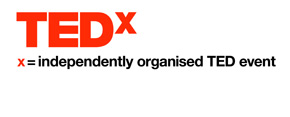I’ve been fortunate to speak at various events as a thought leader in my field. Talking geek comes natural to me. Most of my family and friends have known me as “that computer guy” who more-or-less knows all the answers, as many tech-savvy people are so often deemed.
 Earlier this year, I was nominated and subsequently invited to speak at a local TEDx event, TEDx Flour City. TED was started as a conference in the mid-80s to bring people together to share ideas on technology, entertainment and design. The idea is have and idea that’s worth spreading and share it – in no more than 15 minutes. TED Talks are all over the Internet, inspiring people. I was honored and flattered to be potentially joining this group. TEDx events are smaller, independently run events that share the same format and are licensed by TED. TEDx Flour City was no different.
Earlier this year, I was nominated and subsequently invited to speak at a local TEDx event, TEDx Flour City. TED was started as a conference in the mid-80s to bring people together to share ideas on technology, entertainment and design. The idea is have and idea that’s worth spreading and share it – in no more than 15 minutes. TED Talks are all over the Internet, inspiring people. I was honored and flattered to be potentially joining this group. TEDx events are smaller, independently run events that share the same format and are licensed by TED. TEDx Flour City was no different.
The process to becoming involves a small interview and topic selection meeting. My initial thoughts were to play to my strengths and speak about search engine optimization (SEO). But SEO isn’t really a topic that’s “for the masses,” so to speak. So how does one bring that topic into a quick, compressed speech? I found what I thought was a winning combination and was able to bring the concept hom within 6-7 minutes. I was then told – as a badge of honor – I was being given 3 minutes. The ultimate compliment, so I am told. But also, the ultimate challenge.
Creating the Right Presentation for TEDx
Typically, it takes me several days to prune the right content to create a 20-minute or 50-minute conference presentation. Coming up with something brand new, giving enough background to hit a general audience while still presenting and idea, being witty and having a clear take-away idea was seemingly impossible.
It took days of thoughts and contemplating. Finally, I sat down with my wife for several hours, hammering out thought after thought. Several ideas could flow from one concept to the next. But it kept getting longer. On top of that, bullet points just don’t cut it. If anything plays on the screen behind you, it should be a concept image. One that augments what you’re saying, but the speech itself should stand alone without it. So I couldn’t cheat by putting a list of topics or definitions or other text-heavy slides behind me. Now what?
In the end, I gave an anecdote of a real-life incident. Something that was likely to resonate with many smartphone owners who rely on their devices. I explained why they fail sometimes and how information gets there in the first place. (Shh… it’s from good SEO … Local SEO!)
Then I quickly wrapped up, bringing the anecdote back to the masses, explaining how check-ins and other data tagging actually helps. It was a far cry from where I originally started. I wanted to talk about how business owners should be doing SEO to help us find them. I wanted to tell people how they could go to their favorite establishments and help the owners help themselves with data tagging through various social services. But in the end, nearly all my original ideas and concepts went by the wayside. They morphed, really, into the presentation I gave: Checking In to Give Back. I hope you enjoy it.
Giving the TED Talk
I’ve delivered numerous presentations to audiences large and small. The TED license limited TEDx Flour City to only 100 people. Even through I’ve spoken to rooms large enough to hold 800, I was more nervous to give this little stand-up than any other presentation I’ve ever made. I’ve spoken on live radio about a losing team after their 8th-striaght loss with live call-in guests bashing them and had to play the company line and talk positively. That was mere child’s play compared to my nerves giving the 3-minute TED talk. In the end, I had a blast, made new people and thought about speaking in a whole new way.

